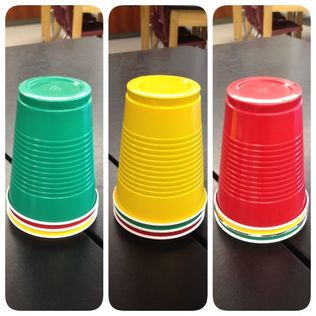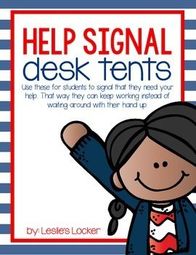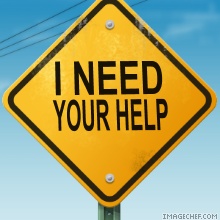What is a Help Signal?
Intervention Central defines a help signal as a tool to use for, "difficult-to-teach students" that might not know how to ask for help when they need it. Or "when these students encounter a problem or work example that they cannot complete on their own, they may start to act out, distract peers seated around them, interrupt the teacher (who may be working with another group of students), or simply sit passively doing nothing". In addition Intervention Central says, "the help-signal is a flexible procedure that the student can use to get teacher assistance during independent seatwork. It allows the student to signal the teacher unobtrusively for help while continuing to work productively on alternative assignments". To use a help signal the student uses the signal and then opens a folder of other academic assignments the student can work on while he or she waits. This will prevent students from becoming out of control because they are actively doing something while waiting for the teacher to get to them. This also reassures the student that they will get the help that they need, they just need to wait their turn. The help-signal will be successful if all students use it, because it is another way to reach all students. It will also be successful if just one student uses the intervention as well.
Here are the steps in implementing the help signal:
Step 1: Choose the signal.
Examples of signals:
Examples of items to go in folder:
Here are the steps in implementing the help signal:
Step 1: Choose the signal.
Examples of signals:
- Colored cups
- "I need help" tent
- Colored strip of paper
Examples of items to go in folder:
- Extra math worksheets
- Scholastic News
- Short stories
Visual Representations
|
Colored plastic cups are one way that a teacher can incorporate a help signal in their classroom. If students need help they can place the corresponding color on their desk. Or if students are sitting at a table the whole group can place the correct color cup on their table. This gives the teacher an easy way to see what students need help.
Green= I understand and I do not need help Yellow= This material is confusing to me, but I might be able to get it, check in with me in a couple of minutes Red=I need help |
|
Teacher Pay Teachers, provides a help signal desk tents for teachers to use as a help signal. The desk tent says either "I'm okay" or "I need some help, please". Students face their desk tent to the teacher depending on what he or she needs.
Click on this link to purchase the help signal desk tents: https://www.teacherspayteachers.com/Product/Help-Signal-Desk-Tents-FREEBIE-1387688 |
A help signal can be as easy as putting up this sign on a desk or on the back of the chair
|
Student Profile
In my field experience classroom, I have a student that will distract other students while she is raising her hand when waiting for help. Other times, she will not even ask for help and she with just distract other students while they are trying to complete their work. By using help signals, hopefully this student with recognize that when she needs help she can either hold up the sign or the cup color and that means the teacher will come around to her and answer her question. The second part of a help signal is to have a folder of other academic things for the student to do while they wait for help. By giving my student this option, she might be less likely to distract other students because she will have something to do.
Content Area Examples
Help signals can be used in most content area classes, except for specialist classes such as music and physical education. In these two content area classes students are not typically at a desk or they are doing something that involves them moving. Instead, the teacher can just give clear expectations for students if they need help with something.



